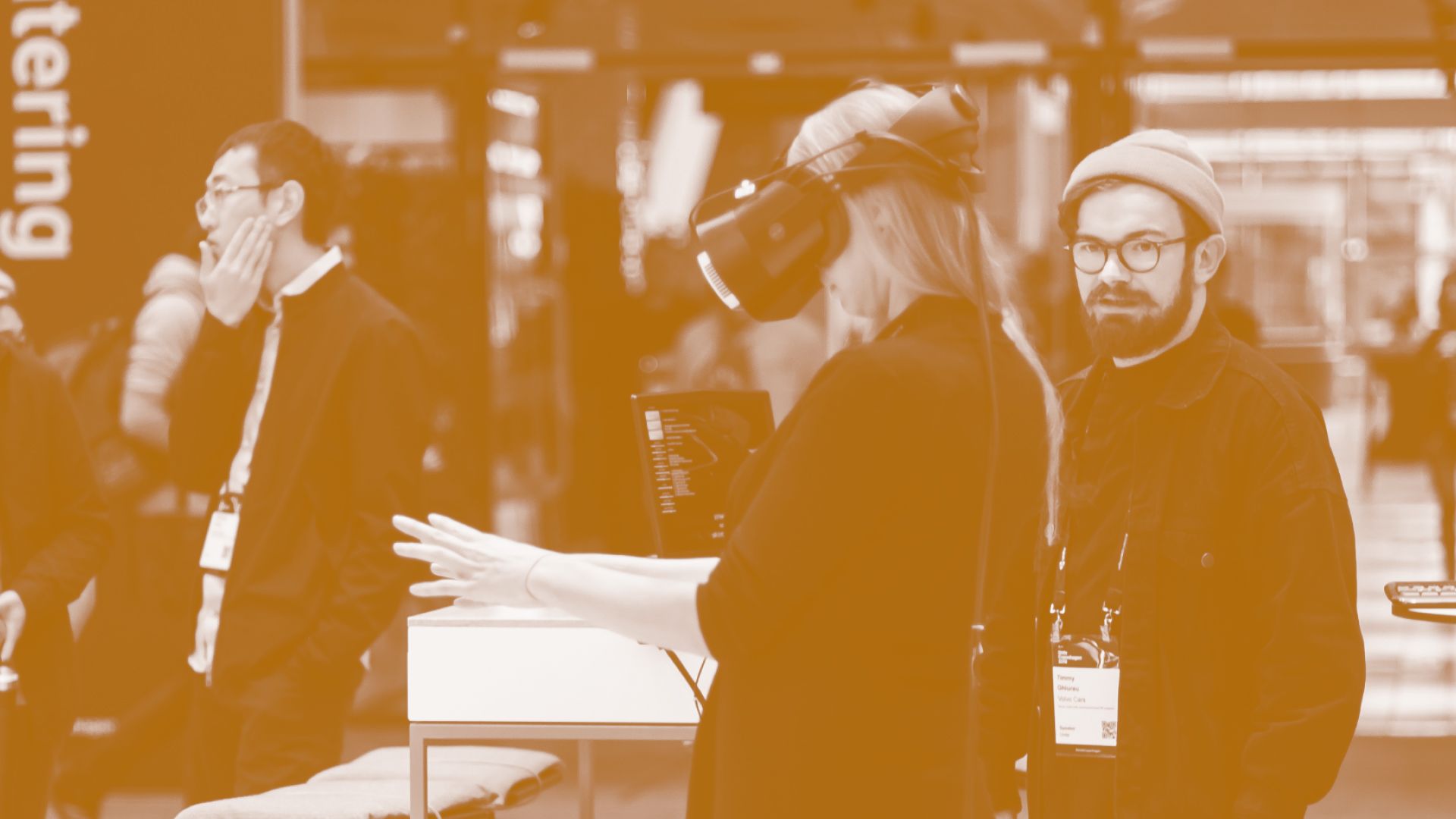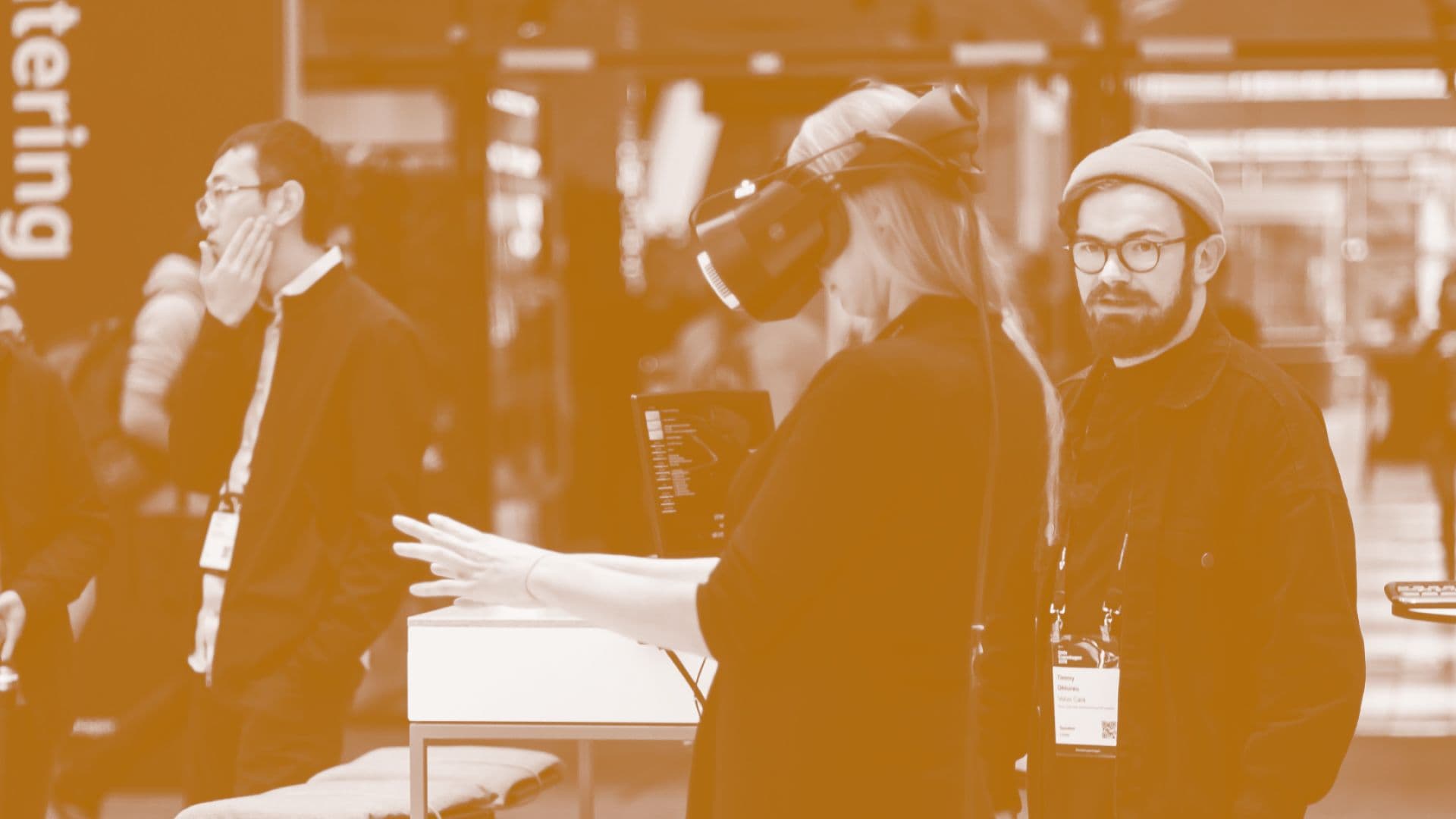
VR Developer

Start the road toward becoming a VR developer
This certification is designed for anyone who has foundational skills in both Unity and C# programming. With this certification, you can show postsecondary programs and employers that you’ve taken your first step toward mastering the foundations of creating VR experiences with Unity.
Prerequisites
- 8th grade reading skills
- Algebra I
- An understanding of how to use desktop computer software and hardware
- Digital literacy skills, including the ability to research, create content, and solve problems using technology
- Computational thinking skills, including the ability to decompose a problem into smaller parts and solve problems through automation
What’s on the exam?
Basic Unity concepts for VR development
- Define essential VR concepts, including but not limited to stereoscopic vision, how VR differs from other forms of XR, tracking methods, and VR input methods
- Demonstrate how to use Package Manager to manage packages, including but not limited to the XR Interaction Toolkit
- Demonstrate how to import or modify assets, including Prefabs
- Given a scenario, identify how to use the Transform component to position, rotate, and scale an object in the scene
- Identify the correct primary interface window to complete a given task while using the default workspace
- Manage components in the Inspector Window
Building a scene for VR
- Given a scenario, identify common preplanning techniques, including design documents, flow charts, animatics, character model sheets, prototyping, greyboxing, storyboarding, concept art, and proportional level scaling
- Identify correct methods to implement environment design with 3D objects using finalized assets
- Identify various types of light and when to use Baked vs Realtime lighting
UX implementation for VR
- Identify the steps to create a basic UI using World Space for a VR scene, including the use of Canvas, Button, Image, Text, and the Event System
- Given a scenario, determine the components needed for a user to physically manipulate objects, including but not limited to Colliders, the XR Grab Interactable, and Rigidbodies
- Identify types of player locomotion, including degrees of freedom, moving an avatar, 3-axis motion, 6-axis rotation, and rotating along an axis
- Given a scenario, identify optimal VR interactions regarding health and safety
- Differentiate between attributes of audio sources, including but not limited to 2D and spatial audio
Scripting with Unity
- Given a scenario, select the appropriate basic C# code to achieve a goal that requires knowledge of properties, variables, methods, basic data types, or binary operators
- Given a scenario, select the appropriate Unity structure to achieve a goal that requires knowledge of data structures, such as Vector3, GameObject, Collider, Rigidbody, or AudioSource
- Given a scenario, identify how to handle a collision or trigger Enter, Stay, or Exit event
Troubleshooting and playtesting
- Given a problem discovered in playtesting, identify areas to troubleshoot, including Static objects, missing Colliders, missing Rigidbodies, incorrect settings, Is Trigger, Is Kinematic, or Use Gravity
- Identify types of logs in the Console
- Identify errors output to the Console and the steps to fix them, including null references, missing end of line markers, or syntax errors
- Identify correct optimization methods when working on a VR scene, including but not limited to camera occlusion culling, removing unused objects, or level of detail (LOD)
Learn and practice
Unity Learn platform
Advance your Unity skills with over 750 hours of free, on-demand learning content and live learning sessions. Check out the following courses on Unity Learn:
Practice
Prepare for the Unity Certified User: VR Developer Certification exam with an official practice test to help you understand the types of questions you’ll encounter and increase your confidence on test day.

If you’re a school or bulk purchaser, please contact our sales team at Certiport, our testing partner. Individuals may purchase the exam separately.
Explore certifications

User
These entry-level certifications validate your foundational skills in Unity and ability to create interactive, real-time 3D experiences.
Certified User: VR Developer (this certification)

Associate
Stand out from the crowd with a certification designed for creators with a portfolio of Unity projects ready to apply for their first professional Unity role.
Certified Associate: Game Developer

Professional
Continue growing your skills with a certification that highlights your readiness for your next professional challenge.